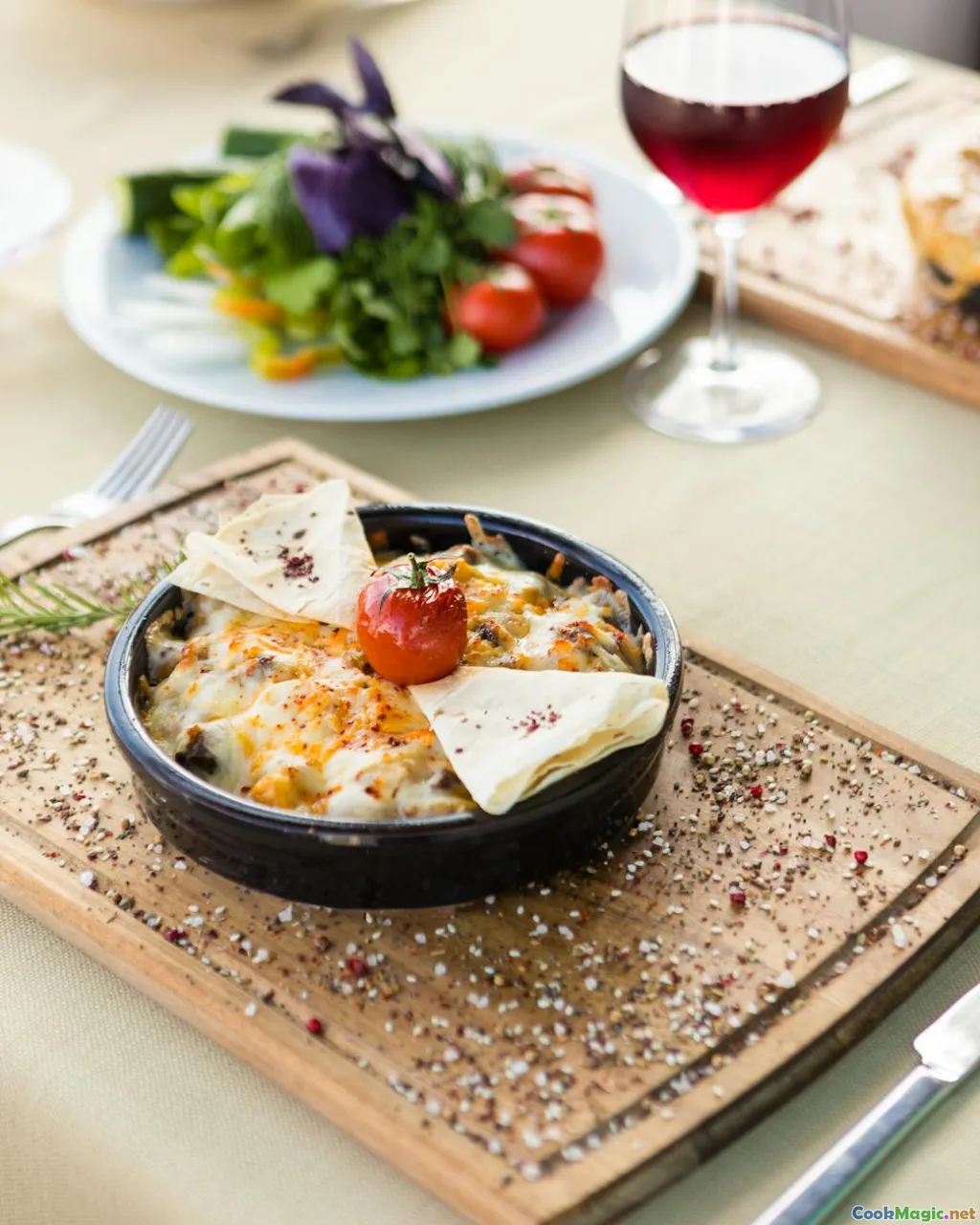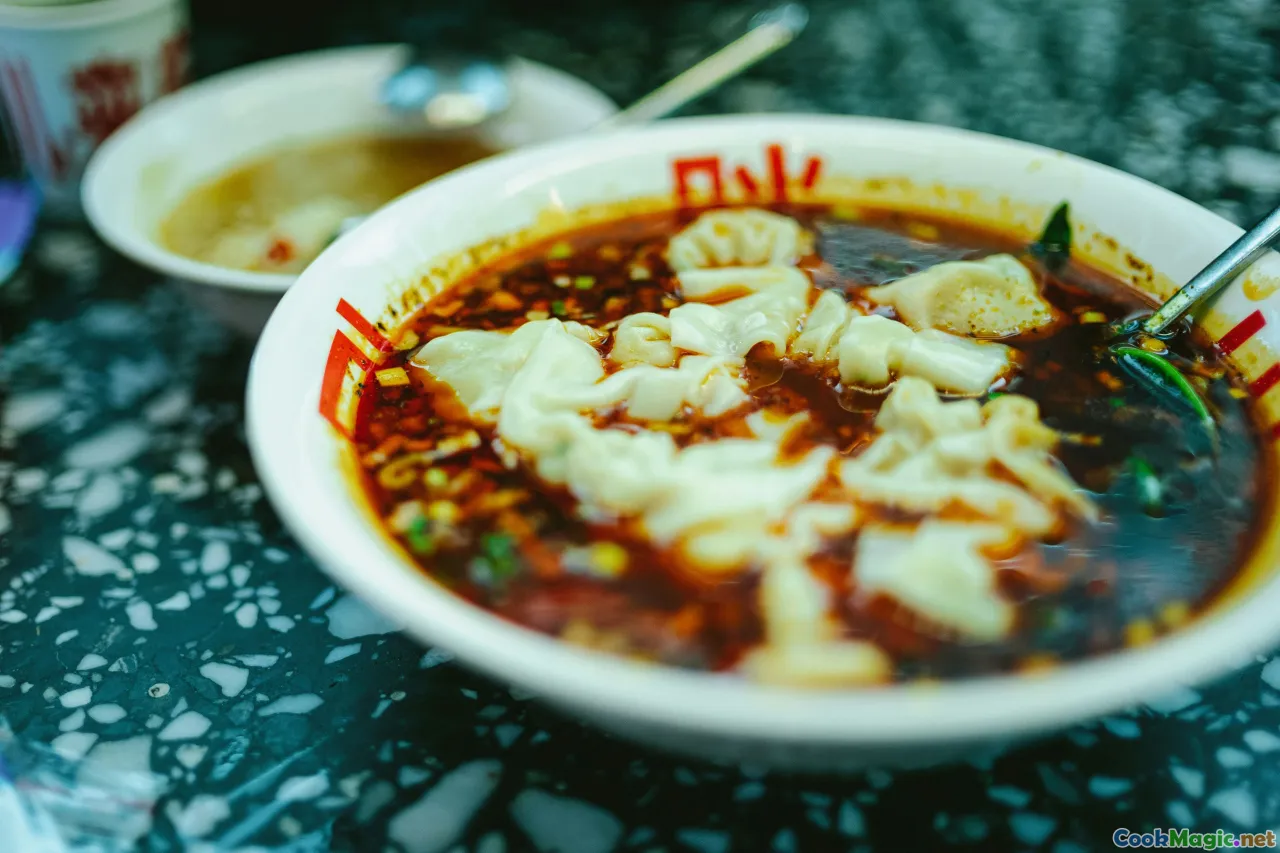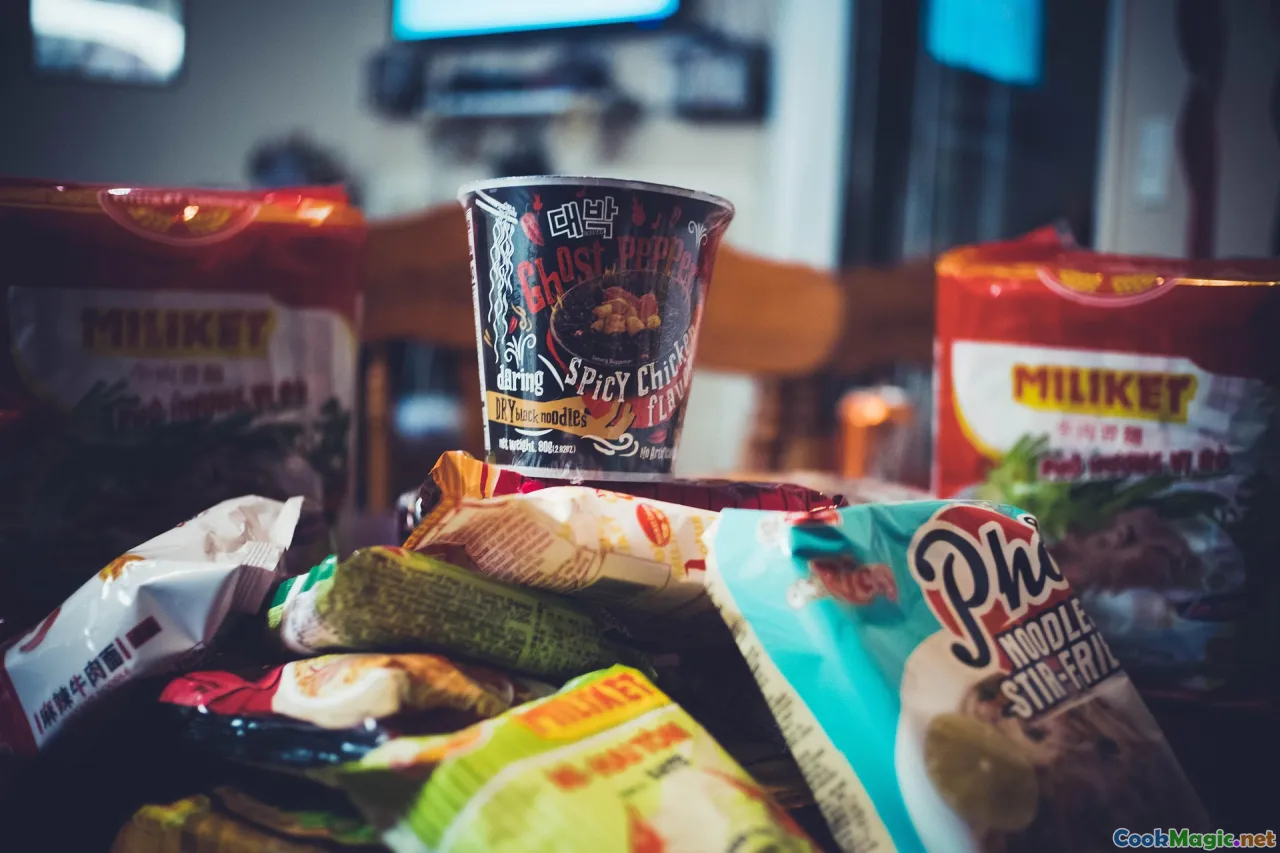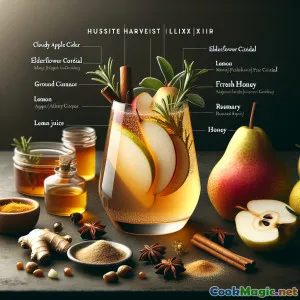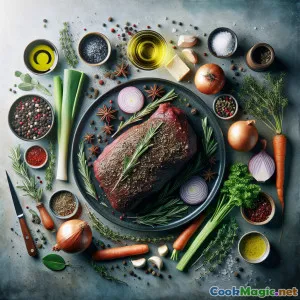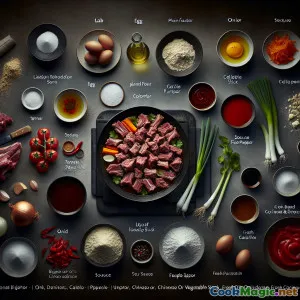
Syty Lagman w Stylu Angielskim z Jagnięciną i Ręcznie Robionymi Makaronami
(Hearty English-Style Lagman with Lamb and Hand-pulled Noodles)
(0 Recenzje)0
1,327
lipiec 15, 2025
Zgłoś problem
Składniki
-
400 grams Baranina z łopatki
(Pokroić na kostkę 2cm; wołowina może być zastąpiona)
-
300 grams mąka pszenna zwykła
(Do makaronów; mąka chlebowa również się sprawdza)
-
1 large Jajko
(Wzbogacić makaron)
-
120 ml Woda
(Dostosuj według potrzeb dla makaronu, więcej dla bulionu)
-
2 tsp Sól
(Podzielone, do makaronu i przypraw)
-
1 large Cebula
(Drobno posiekany)
-
3 cloves Czosnek
(Mielony)
-
1 medium Marchewka
(W kostkę)
-
1 whole Łodyga selera
(Drobno posiekany)
-
1 medium Czerwona papryka
(W kostkę)
-
2 tbsp Przecier pomidorowy
(Dla głębi i koloru)
-
1 tbsp Sos sojowy
(Dla umami)
-
0.5 tsp Chińskie pięć przypraw
(Ukłon w stronę przypraw Szlaku Jedwabnego)
-
2 tbsp Olej roślinny
(Do zarumienienia i smażenia na patelni)
-
1 liter Bulion wołowy lub warzywny
(Ulubione domowe)
-
1 small bunch Świeża kolendra
(Posiekany, do dekoracji)
-
2 whole Szczypiorek
(Posiekany do dekoracji)
(Pokroić na kostkę 2cm; wołowina może być zastąpiona)
(Do makaronów; mąka chlebowa również się sprawdza)
(Wzbogacić makaron)
(Dostosuj według potrzeb dla makaronu, więcej dla bulionu)
(Podzielone, do makaronu i przypraw)
(Drobno posiekany)
(Mielony)
(W kostkę)
(Drobno posiekany)
(W kostkę)
(Dla głębi i koloru)
(Dla umami)
(Ukłon w stronę przypraw Szlaku Jedwabnego)
(Do zarumienienia i smażenia na patelni)
(Ulubione domowe)
(Posiekany, do dekoracji)
(Posiekany do dekoracji)
Wartości odżywcze
- Porcje: 4
- Wielkość porcji: Głęboka miska (400 g)
- Calories: 670 kcal
- Carbohydrates: 0 g
- Protein: 29 g
- Fat: 27 g
- Fiber: 6 g
- Sugar: 8 g
- Sodium: 1450 mg
- Cholesterol: 75 mg
- Calcium: 86 mg
- Iron: 4.2 mg
Instrukcje
-
1 - Przygotuj ciasto na ręcznie ciągnięte makaron:
W dużej misce wymieszaj mąkę, 1 łyżeczkę soli i jajko (jeśli używasz). Stopniowo dodawaj wodę, aż powstanie twarde, ale lekko elastyczne ciasto. Wyrabiaj przez około 10 minut, aż będzie gładkie. Przykryj folią spożywczą i odstaw na 30 minut.
-
2 - Ugotuj jagnięcinę i przygotuj bazę zupy:
W międzyczasie podgrzej olej roślinny na ciężkiej patelni. Dodaj jagnięcinę; smaż, aż się zarumieni ze wszystkich stron. Dodaj cebulę i czosnek; smaż, aż zmiękną. Dodaj marchew, seler i czerwoną paprykę, gotuj jeszcze przez 3–4 minuty.
-
3 - Dodaj pomidory i przyprawy:
Dodaj przecier pomidorowy, sos sojowy, pieć przypraw (jeśli używasz) i 1 łyżeczkę soli. Gotuj, aż lekko się skarmelizuje.
-
4 - Gotuj zupę na wolnym ogniu:
Wlej bulion, doprowadź do wrzenia, a następnie zmniejsz ogień do delikatnego gotowania. Przykryj i gotuj zupę przez 40 minut, aż jagnięcina będzie miękka i smaki się połączą. Zbieraj tłuszcz w razie potrzeby.
-
5 - Uformuj i ugotuj makaron:
Podczas gdy zupa się gotuje, podziel ciasto na cztery małe kulki. Rąk posmarowanych olejem, uformuj każdą w długi sznurek. Stopniowo rozciągaj, odbijając i delikatnie ciągnąc, a następnie wrzuć do gotującej się osolonej wody. Gotuj przez 3–4 minuty, aż makaron wypłynie na powierzchnię; odcedź, krótko opłucz w zimnej wodzie i odstaw na bok.
-
6 - Zmontuj i Podawaj:
Podziel ugotowane nudle między głębokie miski. Wylej gorącą zupę z jagnięciny z dużą ilością pokrojonych warzyw na wierzch. Udekoruj posiekaną kolendrą i szczypiorkiem.
W dużej misce wymieszaj mąkę, 1 łyżeczkę soli i jajko (jeśli używasz). Stopniowo dodawaj wodę, aż powstanie twarde, ale lekko elastyczne ciasto. Wyrabiaj przez około 10 minut, aż będzie gładkie. Przykryj folią spożywczą i odstaw na 30 minut.
W międzyczasie podgrzej olej roślinny na ciężkiej patelni. Dodaj jagnięcinę; smaż, aż się zarumieni ze wszystkich stron. Dodaj cebulę i czosnek; smaż, aż zmiękną. Dodaj marchew, seler i czerwoną paprykę, gotuj jeszcze przez 3–4 minuty.
Dodaj przecier pomidorowy, sos sojowy, pieć przypraw (jeśli używasz) i 1 łyżeczkę soli. Gotuj, aż lekko się skarmelizuje.
Wlej bulion, doprowadź do wrzenia, a następnie zmniejsz ogień do delikatnego gotowania. Przykryj i gotuj zupę przez 40 minut, aż jagnięcina będzie miękka i smaki się połączą. Zbieraj tłuszcz w razie potrzeby.
Podczas gdy zupa się gotuje, podziel ciasto na cztery małe kulki. Rąk posmarowanych olejem, uformuj każdą w długi sznurek. Stopniowo rozciągaj, odbijając i delikatnie ciągnąc, a następnie wrzuć do gotującej się osolonej wody. Gotuj przez 3–4 minuty, aż makaron wypłynie na powierzchnię; odcedź, krótko opłucz w zimnej wodzie i odstaw na bok.
Podziel ugotowane nudle między głębokie miski. Wylej gorącą zupę z jagnięciny z dużą ilością pokrojonych warzyw na wierzch. Udekoruj posiekaną kolendrą i szczypiorkiem.
Więcej o: Syty Lagman w Stylu Angielskim z Jagnięciną i Ręcznie Robionymi Makaronami
About Lagman: An English Interpretation
Lagman is a soul-satisfying noodle soup with deep, multicultural roots influenced by the Silk Road trade, where spices, culinary ideas, and people freely mixed. Traditionally hailing from Central Asia—most notably Uzbekistan, Kazakhstan, and Xinjiang in China—lagman is remarkable for its chewy, hand-pulled noodles bathed in a savory, tangy broth typically brimming with lamb and distinctly spiced vegetables. My adaptation brings a refined English touch to this age-old recipe while also paying homage to its heritage.
The Fascination of Lagman
At its core, lagman embodies resilience and creativity: the hand-pulled noodles require both strength and patience, symbolizing the care people invest in feeding families. The dish is robust, nutritious, and deeply restorative, beloved throughout Eurasia because it’s so endlessly adaptable. Traditional lagman can contain whatever is ripe on the farm or available in markets: lamb, beef, even chicken; chunky carrots, juicy bell peppers, crunchy celery; tomatoes for tang and depth; and always fresh herbs to finish.
About This Unique Fusion
My "English-Style Lagman" keeps the dish’s signature elements—yankable wheat noodles and stewed lamb—but offers a fresh approach for UK kitchens. I’ve blended classical English stew techniques with Central Asian ingredients. The lamb is browned for rich flavour—a nod to English roasts—then subsumed in aromatic broth pumped up with soy and, optionally, Chinese five-spice (honouring lagman’s migration via the Silk Road). Tomato purée intensifies the soup and brings comfortingly familiar umami notes a British palate will find friendly.
For the noodles, I aim for a tender bite by using plain flour enriched (if desired) with egg—something rarely found east of the Caspian, but closer to traditional British fresh egg noodles. Oiling your hands before pulling and stretching them welcomes even novice cooks—though perfection comes with practice, and wobbly noodles taste just as magnificent!
Tips & Notes
- Noodle-Making Can Be Fun Family Time: The hand-pulling process is tactile and laughs are guaranteed, so invite helpers.
- Down to the Last Sip: The true heart of lagman lies in its broth: deep, warming, and cozy; taste and adjust salt and spices to perfection.
- Substitutions Work: Use beef or plant-based protein in place of lamb; replace fresh coriander with parsley if preferred.
Cultural Importance
No food represents multicultural exchange quite like lagman—rarely is one recipe held as correct. On icy roads from Xinjiang to London’s East End, in tidy English towns, to the stalls of Uyghur bazaars, the hearty, chewy texture of lagman noodles seems to whisper stories of migration, hospitality, and care. Every bowl celebrates the confluence of worlds—where England’s love of stews melds seamlessly with traditions from far further east.
Unique Aspects
What sets this recipe apart is its playful intersection of precision (the English culinary spirit, measure and moderation) and adventure (the joy of noodle-pulling, flashes of soy and spice). With hand-pulled noodles, there’s always an element of pride and a sense of accomplishment in transforming the simplest flour and water into culinary artistry.
Personal Thoughts
Lagman in this context is not just food—it’s an invitation. The act of sharing deep bowls, letting fragrant clouds rise with each ladleful, speaking of winter glum chased away, is warming in every way imaginable. If you’ve never made your own noodles before, consider this permission to try. You'll discover it's not perfection, but participation—and communal joy—that makes for treasured memories and deeply good cooking.

